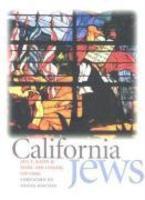
Book Summary
In the late nineteenth century, a Jewish resident in the small Romanian town of Husch received a letter from a friend in America. "If you want to be poor all your life," the writer admonished, "go to New York." Otherwise, he advised, "go to the other side," meaning California, where the 1848 discovery of gold in the Sierra Nevada foothills unleashed a massive migration from Europe, Asia, and the eastern United States. From these early days forward, the state's Jewish community has challenged cultural assumptions about American Jewish life, assumptions almost entirely based on the experiences of east coast Jews. The union's thirty-first state emerged early as one of the nation's most diverse. California's indigenous tribes were forced off their lands first by Spanish settlers, then by the arrival of gold miners from every corner of the world. Because of its Catholic missionary history, eastern-style Protestantism did not dominate Gold Rush California, permitting a more rapid and inclusive immigrant acculturation process. And, unlike their eastern counterparts, California Jews were often among the first settlers to establish a west coast community. Jewish immigrants to California took advantage of its physical environment, ethnic diversity, and cultural distinctiveness to fashion a form of Judaism unique in the American experience. California Jews enjoyed unprecedented access to political power a generation earlier than their New York counterparts. They thrived in the multicultural mix, redefining the classic black-white racial binary by forging relations with a variety of religious and ethnic groups in both San Francisco and Los Angeles. This lavishly illustrated volume isthe first to look at a variety of issues that have shaped California Jewry over its one hundred and fifty year history. Essays discuss Jews and the gold rush, synagogue architecture, Latino-Jewish relations in Los Angeles, the Jewish community of Venice, kibbutzniks in San Fernando, Hollywood's Jewish organizational leadership, Jewish response to Japanese incarceration during World War II, post-war affiliations between Jews and Catholics in the Bay area, San Diego Jewish life and its connection to SDSU, Jewish women's activism, the California counter-culture, and the birth of Brandeis Camp Institute. The volume also includes two photo essays that capture different styles of California Jewish art--the Ketubot (wedding contracts) of artist Robert Saslow, and the work of Michelle and David Plachte-Zuiback, Jewish stained glass artists.
Book Details
| Book Name | California Jews |
| Author | Ava F. Kahn, Marc Dollinger, Moses Rischin |
| Publisher | Brandeis University Press (Aug 2003) |
| ISBN | 9781584650607 |
| Pages | 216 |
| Language | English |
| Price | 1549 |
